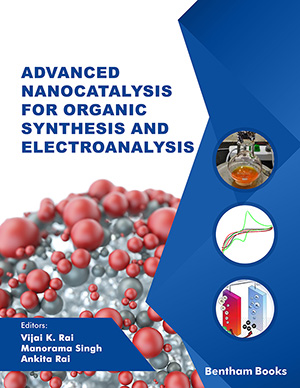
Abstract
The ubiquity of piperazine-2,5-dione core (2,5-diketopiperazine, DKP) in biologically active natural products and the preponderance of its heterocyclic framework in many drugs, has encouraged the development of methods for the selective functionalisation of readily available piperazine-2,5-dione precursors. C-functionalisation using DKPs as electrophilic glycine templates is generally mediated by N-acyliminium ions. These intermediates show highly versatile reaction characteristics, which are reflected in an impressive number of synthetic applications. However, even in some very comprehensive reviews dealing with N-acyliminium ions, references to these species derived from piperazine-2,5-diones are scarce. This review is devoted to fill this gap, placing emphasis upon the most suitable precursors of endocyclic and exocyclic acyliminium ions derived from piperazine-diones and their synthetic applications. Other more complex structures that include this framework or a related portion, such as pyrazino[1,2-b]isoquinoline-1,4-diones or the pyrazino[2,1-b]quinazoline-3,6-dione system, are also overviewed.
Keywords: Piperazine-2,5-dione, 2,5-diketopiperazine, DKP, N-acyliminium ions, pyrazino[1,2-b]isoquinoline-1, 4-diones, pyrazino[2,1- b]quinazoline-3, 6-diones, 1,5-imino-3-benzazocins, N-acetylardeemin
Current Organic Synthesis
Title: Synthetic Chemistry with N-Acyliminium Ions Derived from Piperazine-2,5-Diones and Related Compounds
Volume: 6 Issue: 2
Author(s): Carmen Avendano and Elena de la Cuesta
Affiliation:
Keywords: Piperazine-2,5-dione, 2,5-diketopiperazine, DKP, N-acyliminium ions, pyrazino[1,2-b]isoquinoline-1, 4-diones, pyrazino[2,1- b]quinazoline-3, 6-diones, 1,5-imino-3-benzazocins, N-acetylardeemin
Abstract: The ubiquity of piperazine-2,5-dione core (2,5-diketopiperazine, DKP) in biologically active natural products and the preponderance of its heterocyclic framework in many drugs, has encouraged the development of methods for the selective functionalisation of readily available piperazine-2,5-dione precursors. C-functionalisation using DKPs as electrophilic glycine templates is generally mediated by N-acyliminium ions. These intermediates show highly versatile reaction characteristics, which are reflected in an impressive number of synthetic applications. However, even in some very comprehensive reviews dealing with N-acyliminium ions, references to these species derived from piperazine-2,5-diones are scarce. This review is devoted to fill this gap, placing emphasis upon the most suitable precursors of endocyclic and exocyclic acyliminium ions derived from piperazine-diones and their synthetic applications. Other more complex structures that include this framework or a related portion, such as pyrazino[1,2-b]isoquinoline-1,4-diones or the pyrazino[2,1-b]quinazoline-3,6-dione system, are also overviewed.
Export Options
About this article
Cite this article as:
Avendano Carmen and la Cuesta de Elena, Synthetic Chemistry with N-Acyliminium Ions Derived from Piperazine-2,5-Diones and Related Compounds, Current Organic Synthesis 2009; 6 (2) . https://dx.doi.org/10.2174/157017909788167310
| DOI https://dx.doi.org/10.2174/157017909788167310 |
Print ISSN 1570-1794 |
| Publisher Name Bentham Science Publisher |
Online ISSN 1875-6271 |
Call for Papers in Thematic Issues
Biorthogonal Chemistry: A translational Chemical Tool for In Vivo Applications
After the discovery in 1990, bioorthogonal chemistry encompassed a set of diverse, fast-paced selective chemical reactions, facilitating the study of biomolecules under physiological aura without intervening in the biochemical processes. Over the past two decades, significant progress has been witnessed in bioorthogonal reactions such as Staudinger ligation, metal-catalyzed coupling reactions, ...read more
Design and Synthesis of Green Pesticides
The development of new green pesticides is currently one of the hotspots in the field of pesticide research, aiming to develop efficient, environmentally friendly, and safe pesticide products to meet the needs of modern agricultural production. New green pesticides prioritize environmental friendliness and ecological safety. Therefore, during the research and ...read more
Exploring the Role of Chemical Graph Theory in Advancing Current Organic Synthesis
Organic synthesis is a fundamental discipline in chemistry, which is crucial for the creation of complex molecules with diverse applications in pharmaceuticals, materials science, and beyond. However, the process of designing efficient synthetic routes for target molecules remains challenging. Chemical graph theory, a branch of theoretical chemistry, offers powerful tools ...read more
Novel Green Approaches in the Synthesis of Bioactive Molecules
This special issue regards several aspects of green chemistry, focusing on innovative strategies to run organic synthesis reactions in a more environmentally friendly. Interesting articles or reviews about the critical role of green methodologies in reducing the environmental impact of chemical processes are welcome. Moreover, novel methodological studies using sustainable ...read more
Related Journals
 11
11
- Author Guidelines
- Graphical Abstracts
- Fabricating and Stating False Information
- Research Misconduct
- Post Publication Discussions and Corrections
- Publishing Ethics and Rectitude
- Increase Visibility of Your Article
- Archiving Policies
- Peer Review Workflow
- Order Your Article Before Print
- Promote Your Article
- Manuscript Transfer Facility
- Editorial Policies
- Allegations from Whistleblowers
Related Articles
-
Nanotechnology-based Colorimetric Approaches for Pathogenic Virus
Sensing: A Review
Current Medicinal Chemistry Chemokine Contribution in Stem Cell Engraftment into the Infarcted Myocardium
Current Stem Cell Research & Therapy Therapeutic Approaches for Dominant Muscle Diseases: Highlight on Myotonic Dystrophy
Current Gene Therapy Advances in the Chemistry and Pharmacology of Ecteinascidins, A Promising New Class of Anticancer Agents
Current Medicinal Chemistry - Anti-Cancer Agents Unmet Needs in Ovarian Cancer: Dividing Histologic Subtypes to Exploit Novel Targets and Pathways
Current Cancer Drug Targets Melanoma Immunotherapy: Past, Present, and Future
Current Pharmaceutical Design Current Genome Editing Tools in Gene Therapy: New Approaches to Treat Cancer
Current Gene Therapy Anticancer Antioxidant Regulatory Functions of Phytochemicals
Current Medicinal Chemistry The Anticancer Face of Interferon Alpha (IFN-Alpha): From Biology to Clinical Results, with a Focus on Melanoma
Current Medicinal Chemistry Mortality and Morbidity of HIV Infected Patients Receiving HAART: A Cohort Study
Current HIV Research Mechanism of Action of Flavonoids in Prevention of Inflammation- Associated Skin Cancer
Current Medicinal Chemistry <sup>177</sup>Lu-Labeled Agents for Neuroendocrine Tumor Therapy and Bone Pain Palliation in Uruguay
Current Radiopharmaceuticals P-Glycoprotein Mediated Multidrug Resistance Reversal by Phytochemicals: A Review of SAR & Future Perspective for Drug Design
Current Topics in Medicinal Chemistry Gastric Carcinoma at the Era of Targeted Therapies
Current Drug Targets The Chemical Biology of Immunophilin Ligands
Current Medicinal Chemistry Co-formulation of P-glycoprotein Substrate and Inhibitor in Nanocarriers: An Emerging Strategy for Cancer Chemotherapy
Current Cancer Drug Targets Prediction and Early Evaluation of Anticancer Therapy Response: From Imaging of Drug Efflux Pumps to Targeted Therapy Response
Current Medicinal Chemistry Sydnones: A Brief Review
Mini-Reviews in Medicinal Chemistry The Long and Winding Road to Cancer Treatment: The Trail System
Current Pharmaceutical Design Clinical, Prognostic and Therapeutic Significance of Heat Shock Proteins in Cancer
Current Drug Targets
























